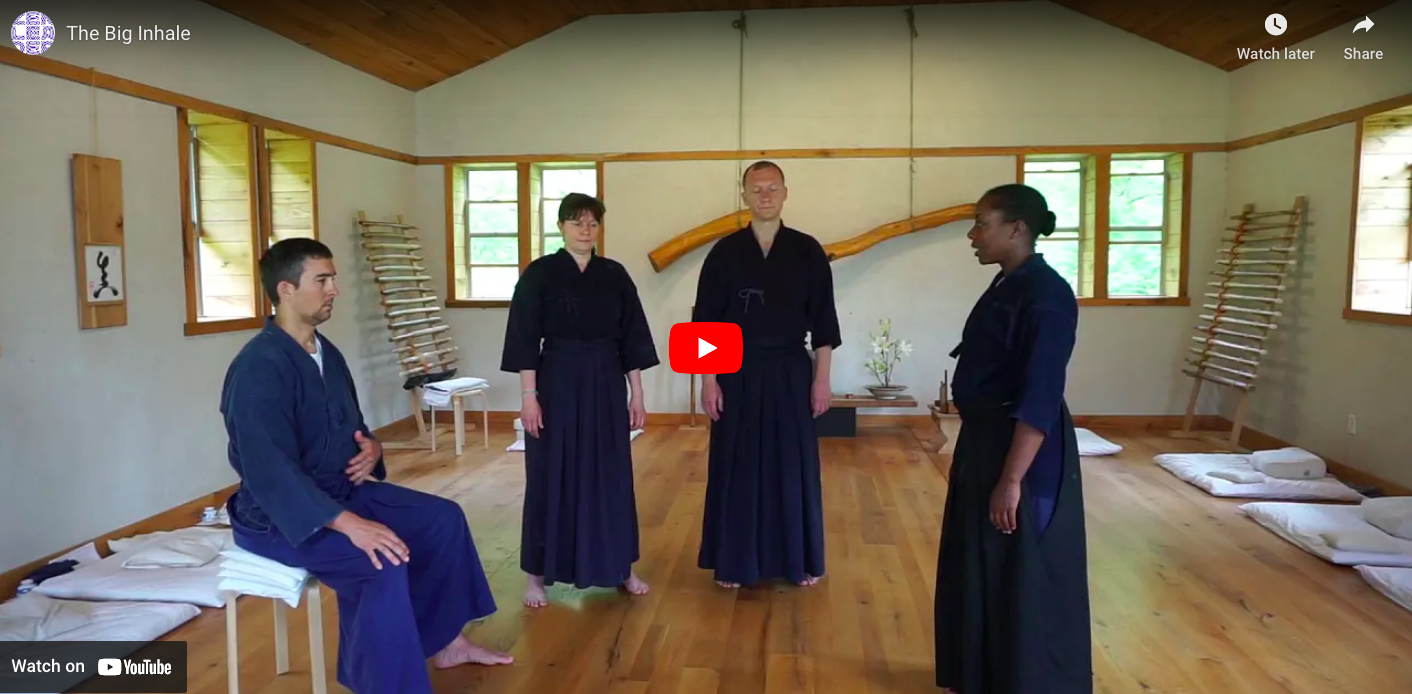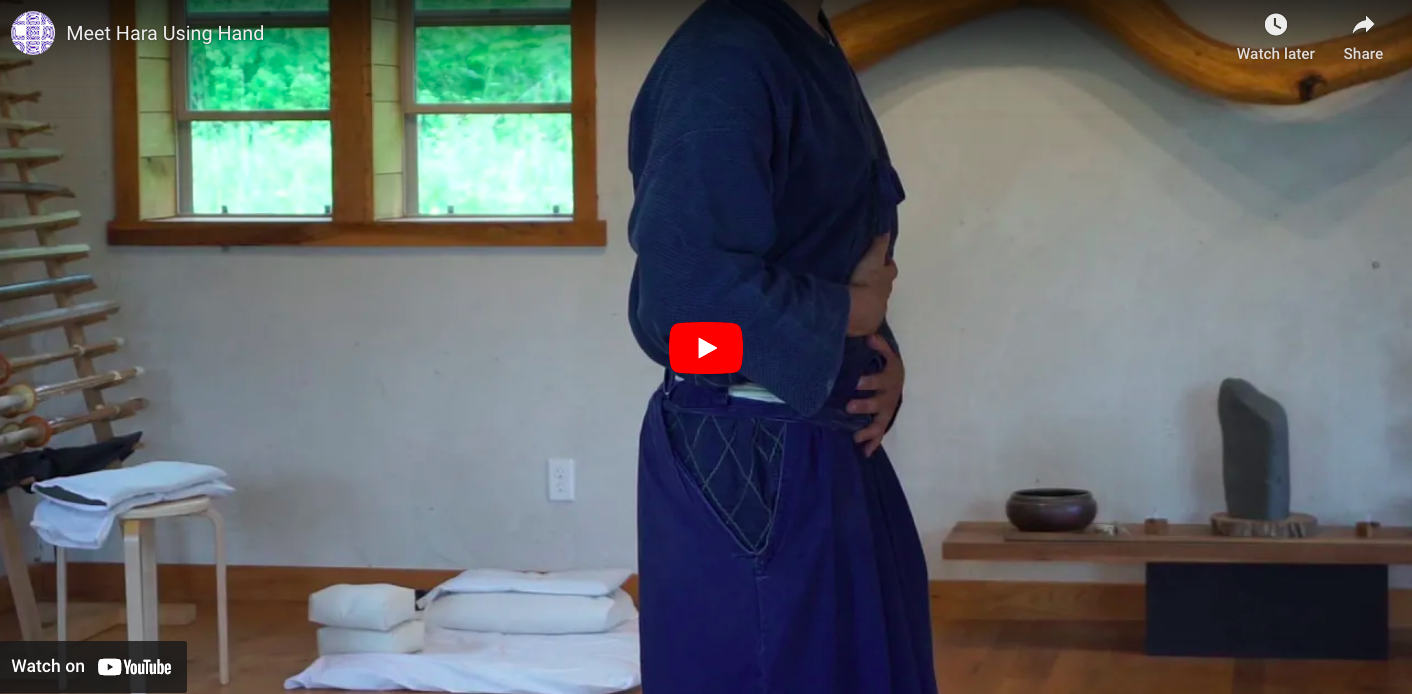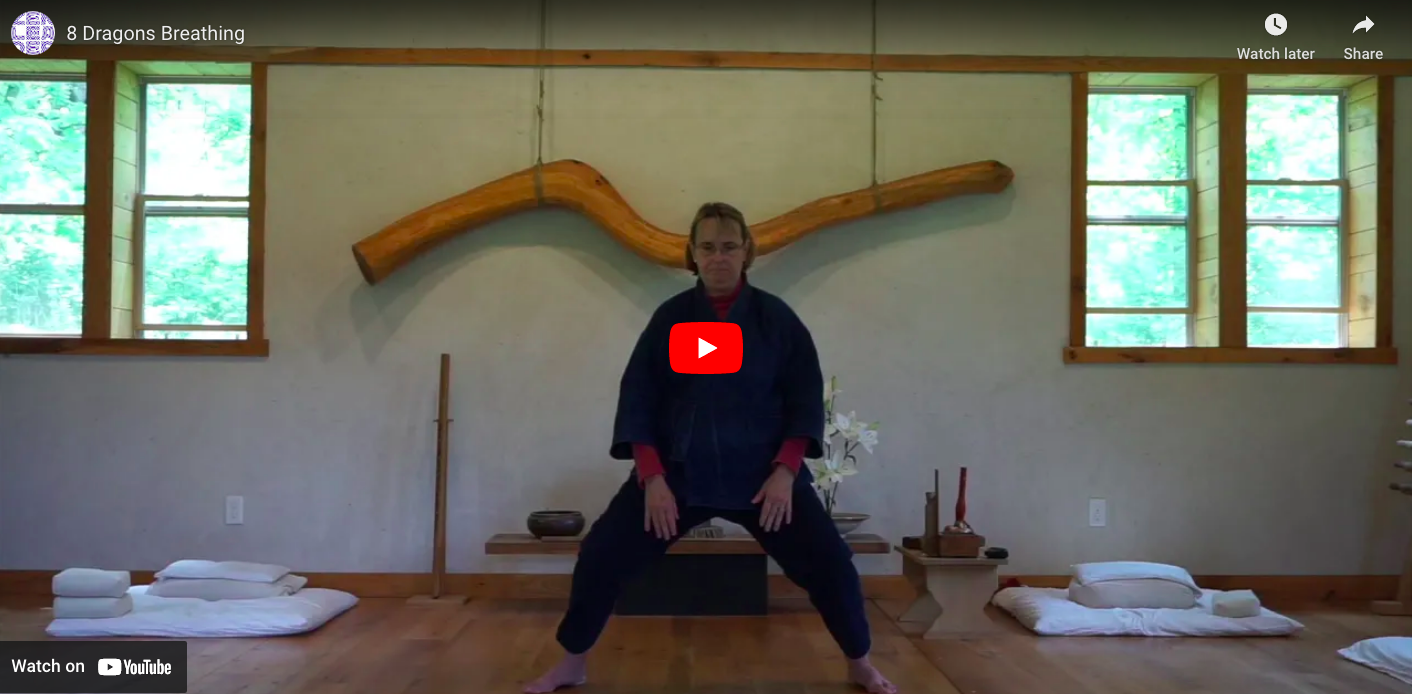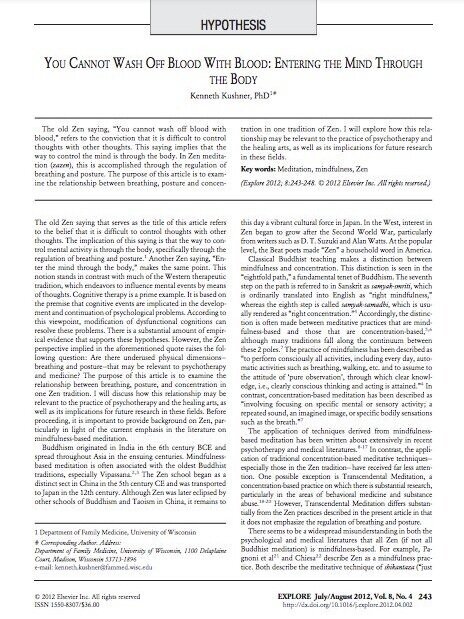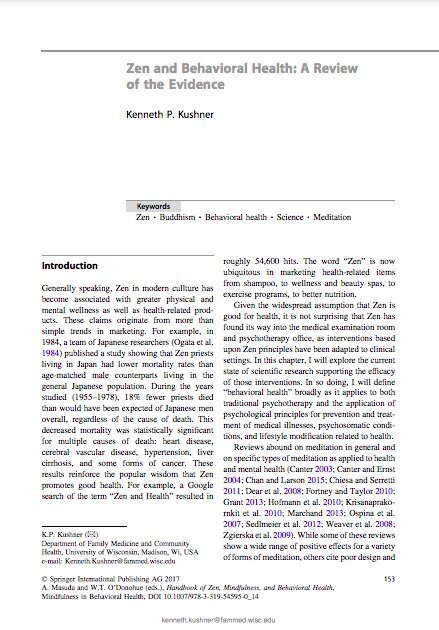
HARA DEVELOPMENT
A CORE CHOSEI ZEN TRAINING
Hara is a Japanese word that has no equivalent in English. While it literally refers to the lower abdomen, the term also has profound psychological and spiritual meanings in the Japanese language and culture. Hara can be seen as the unification of a person’s physical, psychological and spiritual dimensions. And the development of the hara is fundamental to all Chosei Zen training: it enables allows a person to enter deep samadhi (a state of relaxed concentration from a position of “no mind”) and to generate ki (chi, in Chinese), vital psychophysical energy.
Hara is best understood in terms of breathing. In hara development, we think of a progression along three levels of breathing:
Thoracic or chest breathing — The breath comes from the upper body, with little activity in the lower abdomen.
Abdominal or diaphragmatic breathing — The lower abdomen is highly engaged in breathing. It functions like a bellows, expanding on inhalation and contracting on exhalation.
Hara breathing — The lower abdomen remains expanded whether inhaling or exhaling.
New Hara Foundations Course
Join this flexible course and learn at your own pace, from wherever you are. If you’re just starting out you’ll find a strong foundation here. And if you’ve been at this a while, the course can help you deepen your practice.
Hara Development Resources
Hara Development Blog
Kushner Roshi’s blog devoted to all things hara.
Videos from the blog are below.


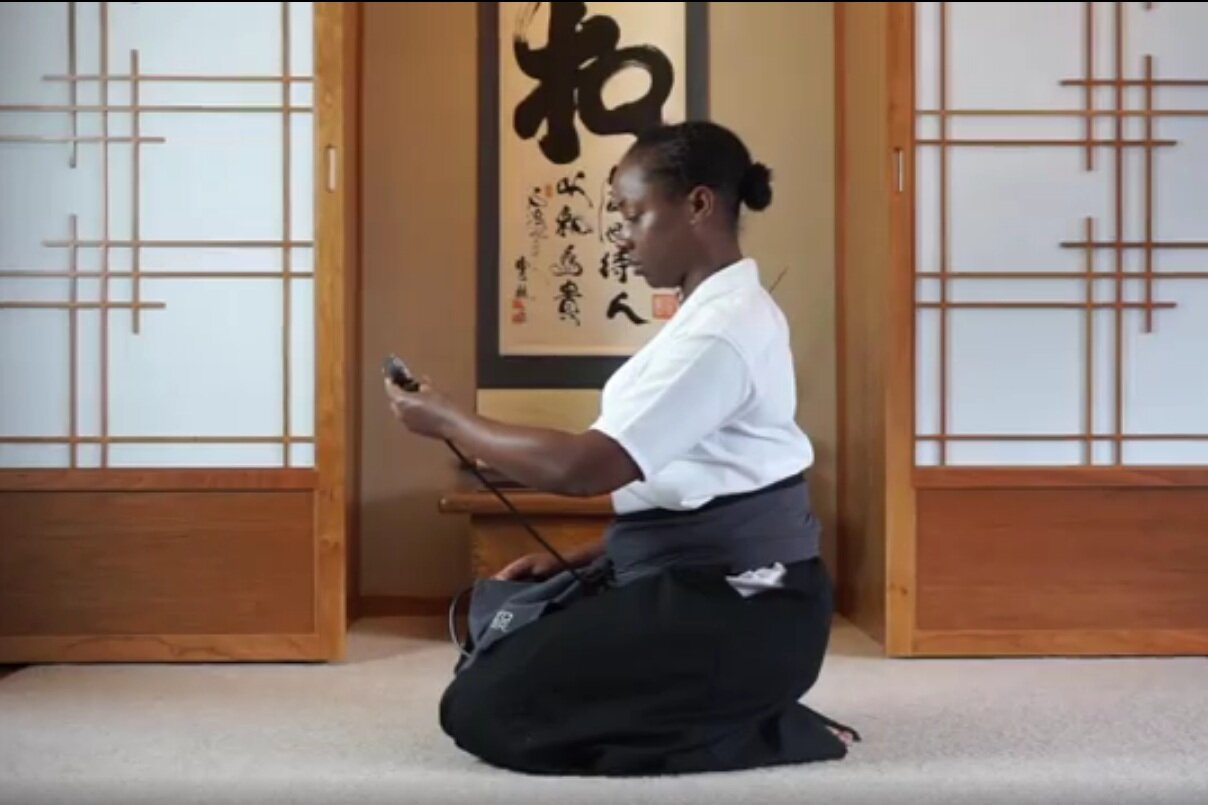










Short videos
